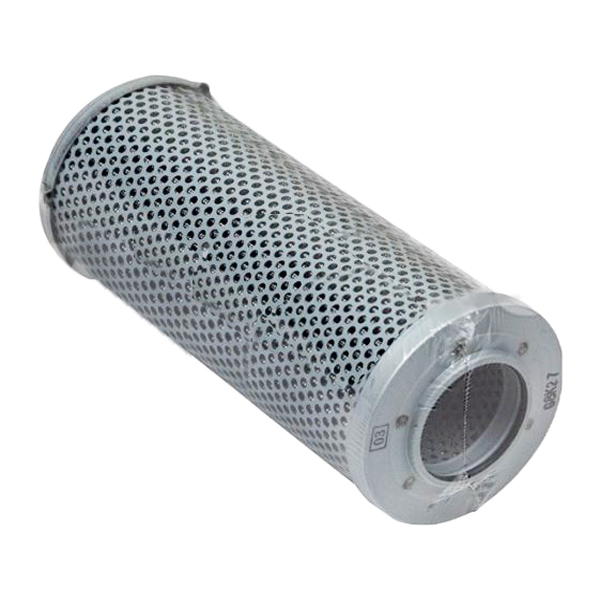Dismantled parts from PC200LC-8M0 C15621.
The Idler Cushion Cylinder of the Komatsu PC200LC-8M0 is a critical component in the excavator’s undercarriage system, specifically responsible for maintaining proper track tension and absorbing shocks. Its primary function is to control the movement and alignment of the idler wheel, ensuring that the tracks remain tight, aligned, and able to perform effectively under various operational conditions. Here is a detailed breakdown of the Idler Cushion Cylinder:
1. Function and Purpose:
- The Idler Cushion Cylinder ensures that the tracks of the excavator are always properly tensioned. Proper track tension is critical for smooth movement and the overall efficiency of the excavator.
- It acts as a shock absorber, dampening impacts and vibrations that occur when the excavator moves over rough or uneven terrain. This function helps protect the undercarriage components, including the idler, rollers, and tracks, from excessive wear.
- By adjusting the tension automatically, the idler cushion cylinder prevents track slippage, derailment, and damage to the track system.
2. Components of the Idler Cushion Cylinder:
The cylinder itself is a hydraulic component with the following key parts:
- Hydraulic Cylinder: The main body of the cushion cylinder, which houses the piston and hydraulic fluid.
- Piston: Moves within the cylinder to adjust the tension. As hydraulic pressure is applied, the piston extends or retracts, moving the idler wheel to tighten or loosen the tracks.
- Rod: Connected to the piston, it extends and retracts based on the piston’s movement, pushing against the idler wheel to maintain track tension.
- Hydraulic Fluid: The cylinder is part of the excavator’s hydraulic system, using pressurized fluid to power the movement of the piston.
- Seals and O-Rings: These prevent hydraulic fluid from leaking out and keep contaminants like dirt and moisture from entering the hydraulic system.
- Ports for Hydraulic Connections: These connect the cylinder to the excavator’s hydraulic system, allowing fluid to flow into and out of the cylinder.
3. Operation:
- The Idler Cushion Cylinder operates through the excavator’s hydraulic system. When pressure is applied by the hydraulic system, the piston inside the cylinder moves, which extends or retracts the rod attached to the idler wheel.
- This action adjusts the position of the idler wheel, tightening or loosening the tracks depending on the operating conditions.
- In addition to maintaining track tension, the idler cushion cylinder absorbs shocks when the machine moves over rough ground or hits obstacles, thereby reducing the stress on other undercarriage components.
4. Material and Construction:
- The hydraulic cylinder is made of hardened steel or other durable metals that can withstand high pressures and rough working conditions.
- Seals and O-rings are typically made from heavy-duty rubber or synthetic materials, capable of enduring hydraulic pressure while keeping out dirt and debris.
5. Role in Track Tension:
- Maintaining proper track tension is crucial to preventing track slippage, misalignment, and premature wear of undercarriage components.
- If the tracks become too loose, the cylinder automatically adjusts by pushing the idler wheel outward to tighten the tracks.
- If the tracks are too tight, the cylinder retracts, pulling the idler wheel back and relieving the excess tension.
6. Shock Absorption:
- The shock absorption function of the idler cushion cylinder is essential for reducing wear on the undercarriage. When the excavator moves over uneven surfaces, the cylinder compresses slightly, absorbing the impact that would otherwise be transferred to the tracks and rollers.
7. Maintenance:
- Regular maintenance of the idler cushion cylinder is essential to ensure smooth operation and longevity. This includes:
- Inspecting for hydraulic leaks: Any sign of hydraulic fluid leaking from the cylinder should be addressed immediately.
- Checking the seals and gaskets: These components prevent fluid loss and keep dirt out. If they become worn, they should be replaced.
- Lubrication: Proper lubrication of the rod and other moving parts ensures smooth operation and reduces wear.
- Hydraulic fluid level checks: Low fluid levels can affect the cylinder's performance and should be monitored regularly.
8. Common Issues:
- Hydraulic Leaks: A common issue in the idler cushion cylinder is the leakage of hydraulic fluid due to worn seals, gaskets, or connections.
- Seized Piston or Rod: If not properly lubricated or maintained, the piston or rod may become stuck, preventing the cylinder from adjusting track tension.
- Corrosion: Exposure to moisture or harsh environmental conditions can lead to corrosion on the cylinder’s body, reducing its effectiveness and lifespan.
9. Importance of Proper Operation:
- If the idler cushion cylinder is not functioning properly, the tracks can become misaligned or too loose, causing:
- Premature wear on the track components, rollers, and idler wheels.
- Track derailment, leading to operational downtime.
- Reduced efficiency of the excavator, especially during heavy-duty or rough-terrain work.
- Therefore, ensuring that the idler cushion cylinder is in good working condition is crucial for minimizing operational delays and maximizing the excavator's productivity.
10. Durability and Protection:
- The cylinder is designed for heavy-duty use and built to handle the constant stresses of excavation, including dirt, debris, and environmental challenges.
- To extend the lifespan of the idler cushion cylinder, regular maintenance and protection from excessive dirt and debris are recommended.
Summary:
The Idler Cushion Cylinder of the Komatsu PC200LC-8M0 is a vital hydraulic component responsible for maintaining proper track tension and absorbing shocks. By adjusting the position of the idler wheel, it ensures that the tracks remain properly aligned and tensioned, which is critical for the excavator's stability and performance. The cylinder also cushions the impact of rough terrain, protecting the undercarriage components from excessive wear. Regular inspection, lubrication, and maintenance of the cylinder, seals, and hydraulic connections are essential for ensuring its reliable operation and prolonging the excavator's overall lifespan.





